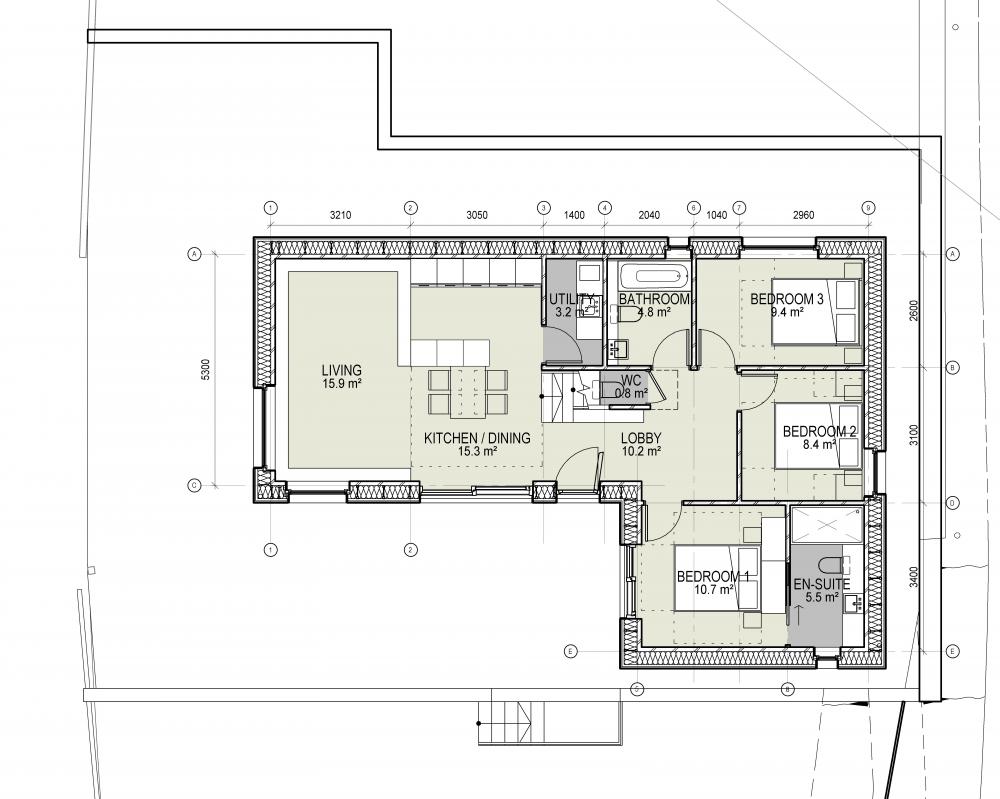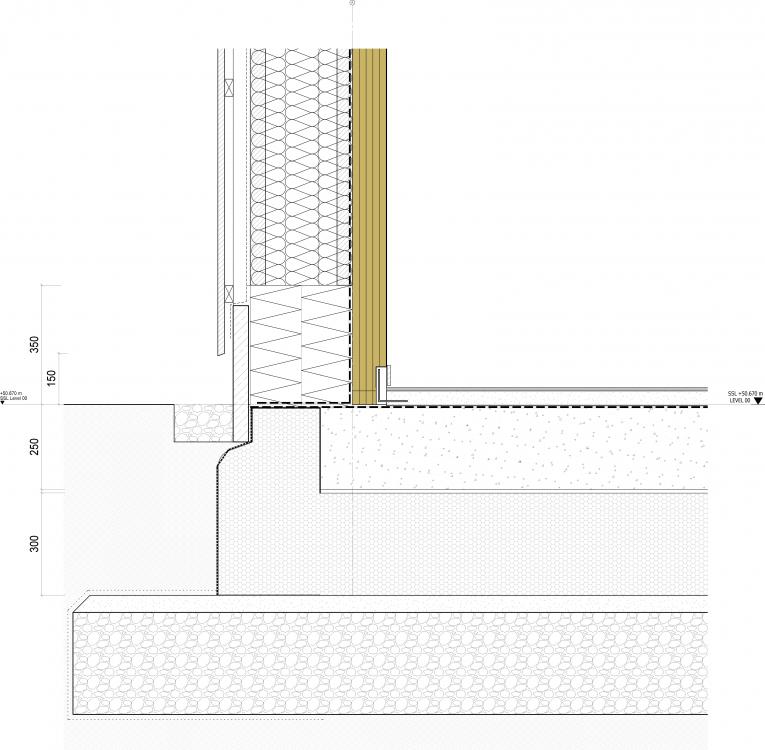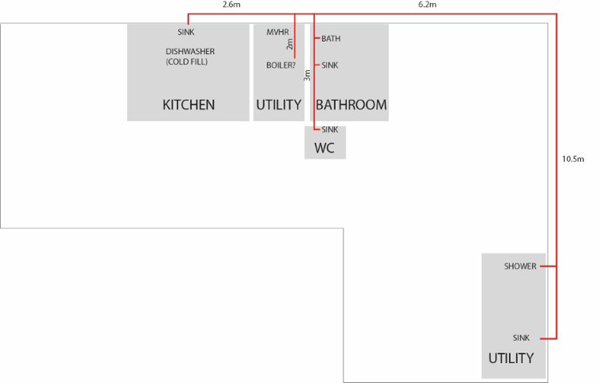
D_T
Members-
Posts
8 -
Joined
-
Last visited
Personal Information
-
Location
Bath
Recent Profile Visitors
The recent visitors block is disabled and is not being shown to other users.
D_T's Achievements

New Member (2/5)
3
Reputation
-
UPDATE: I rang SunAmp technical (since we bought directly from them) and they were very helpful. After isolating and looking at both the temp sensor on the top and the service cover on the front of the unit, it turned out to be a tripped Overheating Cutout (little red brown cross) which I have since reset. Before this I didn't even know that the front plate concealed a cutout, so I've definitely learned something in all this. Now everything appears to be working again, so I can't fault SunAmp on their customer support for this issue. Oops, sorry I meant Jeremy Harris (I knew it was someone from the other building forum). Thanks again for all your input everyone.
-
Thanks both. The SunAmp in question is on the same RCD in our consumer unit as the Eddi. Nothing had tripped but I tried flicking that off and on again. Nothing has changed unfortunately and no other RCD's have tripped. Not sure if that's the same question, or involves taking the cover off the controller unit? SteamyTea has previously given a helpful post on how to do this (once isolated) so it's probably my next thing to try. I'll talk to SunAmp first though. May be worth mentioning that both SunAmps were installed with 2 localised switches each next to their controllers. One of these is a switched fused spur which also supplies the Eddi - I've previously found the 13a fuse in this spur to be a bit temperamental, especially when the sun is out and we're generating lots of PV power. However, since the Eddi appears to be functioning with no issues, I've currently ruled this out.
-
Hello all, Another 3 years since my last post, and unfortunately once again it's Sunamp related. We have separate 3kW and 6 kW SunAmp PV's installed back in 2018, despite some early installation issues we've had fairly reliable hot water since 2019. However in the last few weeks we've noticed that our larger 'tank' is no longer filling up at all - it appears to have gone into the cold start mode to protect the PCM. Our Eddi diverter is still talking happily to the smaller unit, but when we try 'boost' mode on the larger one it just puts 0kW in (although still tries to boost for 60 minutes). When we have excess PV, the diverter tries the larger unit and then just bypasses it and charges the smaller one or exports to grid. I intend to call SunAmp when I'm at home and can push various buttons, but thought I'd ask the question on here first in case anyone has had something similar. My assumption is it must be something to do with temperature sensors and the Eddi assuming the tank is full when it's actually stone cold. Thanks in advance.
-
Thanks both. Don't worry, I don't plan on removing the cover, however it is so frustrating to not have a charge indicator (although I'm aware of the theory behind how the PCM state is difficult to determine). What's more concerning is that the SunAmp makes it 'feel' like it is losing heat as a consequence (behaviour, not physical touch). We made 14kWh yesterday, both SunAmps registered as full on the Eddi, so we didn't boost. I had a lovely 10 minute shower in the morning, and then my wife got instant cold water - so I'm not very popular right now..! I had thought that a 3kWh unit could handle 2 modest showers on a full charge. So either the capacity is less than we thought or the unit is registering as full too early in the cycle. For now we'll revert to boosting as a matter of course, but it really does seem like the battery either isn't charging or isn't staying warm overnight.
-
Hello all, it's been a while (3 years!) since I signed up and posted on here but I've come back to ask for opinions/experience as this is where I first became aware of SunAmps in any great detail thanks to JSHarris and others. We had a UniQ 3 and UniQ 6 fitted in December 2018 (full disclosure - it happened, by chance, to be by NickfromWales - hi Nick- but we ordered direct from SunAmp). After some initial grumbles which I wont go into in this post, we now have a fairly decent setup with an Eddi managing the PV diversion between each unit - 6kWh sitting in our Utility and 3kWh in the En-suite. This year we finally got our shower installed and have started using the smaller unit much more frequently. As a result (and the lack of sunshine thanks to Storms X,Y & Z...) we're now in the habit of boosting the unit at 3am each night so that it should be full the next day. This week we had a good sunny day where we made 9kWh (according to the solar edge inverter). Our Eddi recorded that all of this power was diverted into the smaller unit, despite the fact that this is basically double the capacity of the battery. What's more, that evening we noticed the Eddi indicator wasn't showing the tank as full and we ended up having to boost it for a further hour (i.e. practically a full charge). My question is simply, where is this power going? I can't believe the UniQ is physically losing that much heat, even if the insulation has bowed a bit (I know that's a thing). So are the UniQ's designed to discharge any excess straight back into the grid? Or is this just that a sensor has become uncalibrated (I'm aware the Eddi is relying on a CT clamp). Any ideas? I'm hoping it's not something more serious with the controller units etc. as it's been a long journey to get here.
-
ProDave, thanks for the point on services. I should have been clearer - we went to see a similar CLT passivhaus in Hackney whilst we still lived nearby and decided that galv conduit surface mounted on the walls is not the end of the world as long as we locate it carefully. Our layout (below) means we generally have a 'servant space' (utility, ensuite etc.) adjacent to a furniture wall in a living space (bedrooms etc.) so I'm not that worried about locating drops etc. at this stage JSH, thanks for the pointers on vapour movement etc. I think our insulation envelope is fairly consistent around the building, although I'm struggling slightly with the base of the Larsen trusses and whether they can just sit on rigid insulation as the detail below. I have been assuming XPS here due to the higher risk of saturation at this level but this doesn't really sit well with your point about condensing outwards etc. Self-adhesive DPM on the outer face of the CLT should keep this dry and separated from any external water (plus it forms a backup airtightness layer at junctions. jack, thanks for the weekend viewing. No intention of going it alone on our build - professionals with a mobile crane all the way! They have attended site already and we've agreed a construction plan for this phase.
-
Hello folks, So many replies already! CLT choice was a mixture of personal preference (aesthetic/reduced maintenance appeal of exposed inner surfaces) and the more practical robustness and airtightness qualities of the solid material. I subsequently found that our soil conditions and the isoquick raft approach meant that we would likely require a lightweight building anyway. Throw in some access issues (TPO'd trees, shared driveway) and the idea of offsite prefabrication was also appealing... ProDave we have enough built-in storage ideas that I'm not too worried about hiding service distribution and we're even open to the idea of exposed galv conduit & MVHR ducts if we have to, although I may end up putting a ceiling in just to reduce the amount of exposed timber surfaces! IanR, jack is correct, the CLT is the inner skin (equivalent of a v. thick OSB sheathing board). The Larsens (or likely Steico I-Joists) then just act as non-structural spacers to hold the cladding out far enough (450mm!) to allow cladding the CLT in dense rockwool. I've got some detailing challenges around the base of the trusses (to stop them wicking water) and I remain a little worried about freeze/thaw cycles on the outer chord since this is effectively uninsulated and exposed to moisture variation. Hoping to model this in Psi-Therm/WUFI to see if it's a serious issue but I don't know either package so will be feeling my way a bit... So far no-one appears to sell tannalised I-joist equivalents of tile battens. Nickfromwales, I have a very scruffy hand drawn plumbing schematic which I hope to CAD up soon and share. In the meantime I've attached an older diagram that explains the basics. Essentially the bungalow format means all water distribution is on the ground floor and horizontal pipe length is the biggest issue. Originally I was looking at doing all this from a central point in the Utility room (as per the diagram) but realised it would probably be much better to just split the SunAmps and have the secondary one standalone in the en-suite. Alphonsox, thank you for the suggestion of modelling the SAPV's as an instantaneous heater. This is what I've done so far, but it ignores the issue of PV generation to supplement the electricity use. As such, the carbon factor of the heater is fairly detrimental from a PHPP aspect (i.e. it assumes all grid provided) and probably worse than it would be in reality. Thanks for all the responses so far.
-
Hello all, I've been over on the forum (GBF) for some years now and thought it was now time to join this one too as we have a self build about to go live. In brief it's a new-build bungalow (with mezzanine) on a rural site near Bath. Plot bought with full planning permission which I amended to get elevations more favourable to PHPP. Aiming for Passivhaus standards despite a tricky form heat loss factor (4.2) due to the aforementioned planning consent (pitched roof, L-shaped plan). So U-values of 0.07 to walls and roof, 0.08 to slab. Construction is CLT frame on isoquick raft, rockwool insulation (vermin and arson concerns) between Larsen trusses, with timber rainscreen to walls and slates to roof. All electric too as no gas nearby - I'm intending to use electric towel rails to provide space heating and two separate SunAmp units to provide localised DHW. I'll start a separate topic on this, but if anyone has any tips on how to model the SunAmps in PHPP I'd be really grateful! Thanks in advance, T





